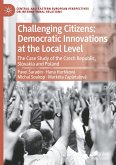Moving from the fall of the Berlin Wall in 1989 to the present day, this book traces the trajectory of the six East Central European former satellites of the Soviet Union (Poland, Hungary, the Czech Republic, Slovakia, Romania, Bulgaria) that have joined the European Union. It seeks in particular to explain these countries' disenchantment with the "return to Europe" in spite of their significant advances. The book proceeds country by country and then devotes chapters to some contemporary issues, such as minorities, migration, and the relations of these "new" members with the European Union as a whole. The book eschews theory and is intended for a general audience, including students at all levels in political science and history classes devoted to the EU and to contemporary Europe, and to an academic and practitioner audience interested in world affairs and the evolution of the European Union. The book strives to fill a persistent knowledge gap in the English-speaking world concerning East Central Europe, and to offer fresh insights about the region in the context of contemporary geopolitics.
"The scientific contribution of the book is credible and welcomed. ... it contains extensive footnotes, which has not only references but also supplementary considerations and explanations. ... The author's effort to characterize all these countries' political, social, and economic evolution is remarkable. ... Throughout the book, clear language is used, easy to understand by the specialists and the general public." (Gabriel Camara, Southeast European and Black Sea Studies, May 12, 2022)








